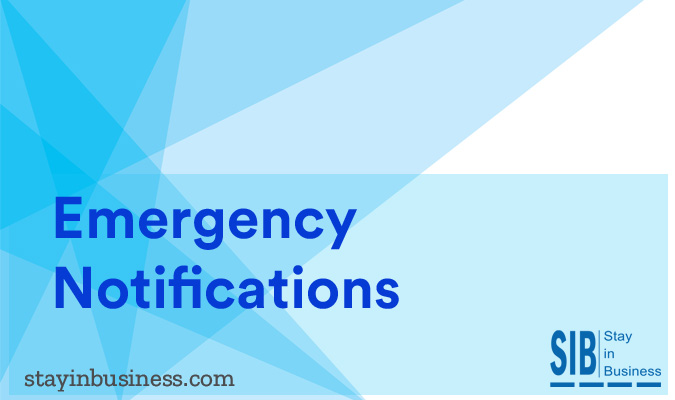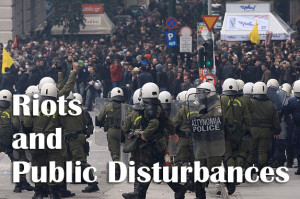
Having a sound BCDR plan is a key strategy in overcoming a disaster striking a business. It will mean the difference between being able to continue production with a minor production blip or serious financial losses. Since the second scenario is unacceptable, BCDR Plans are an essential survival tool.
Planning a Emergency Notifications scheme
The BCDR Plan will have several important steps that need to be taken during a disaster situation. Keeping key stakeholders updated during and after a disaster declaration is a key priority. The essentials of an Emergency Notification plan for external and internal communications are:
- The person in charge of developing a BCDR plan should prepare a highly detailed Emergency Notification plan.
- Top management and key personnel should be informed.
- First responders should be notified immediately so that they can respond to the disaster situation.
- Emergency services such as police, fire, ambulance services, hospitals etc. should be alerted about the disaster.
- Internal alerts regarding the disaster can be given by using the Public Address System, Pager alerts, texting, voice mail, e-mail etc.
- The alerts should have relevant details regarding the disaster plus evacuation details etc. and assembling at designated assembly points.
- Give stakeholders regular updates on the situation.
- Notify staff when the ‘all clear’ is given and it is safe to return to their work stations.
- The Emergency Notifications should also include the procedure on how to inform family members in case of death or injury.
- Public messages should be released by the designated person containing details about the nature of disaster, response of the organization, details of injuries/death plus warnings to the public about possible safety issues. The messages should be factual and sincere without sounding alarmist.
- The Emergency Notifications plan should be regularly updated to keep contact details valid.
It should be noted, that the message going out to different types of people, should be appropriately worded for the recipient.
For BCDR to work as intended, an important component is the plan for Emergency Notifications. The Emergency Notifications should be able to do the following immediately when a disaster strikes. Disasters can be wide and varied, even though it may be rare. Floods, earthquakes, tsunamis, fires, terrorist strikes, explosions etc. are all possibilities and have to be factored in even if, statistically, it is categorized as a ‘once in a lifetime even’. The Emergency Notifications plan should be able to do the following in the shortest possible time:
- The plan should be able to be activated immediately after a disaster has been declared. If there is a time lag, the essence of the Emergency Notifications and DR/BC Plans get compromised to a great extent.
- Senior Management is brought into the loop as soon as the disaster is declared by the authorized manager.
- The designated company spokes person should be briefed about the situation, with all relevant details, so that they can confidently interact with the Media and Public.
- Prepare and issue appropriately worded documents to the Media and Public.
- Organize Media coverage so that facts, not wild speculation, fill the media space.
- Keep staff and other stakeholders updated at regular intervals, along with instructions, if any.
- The Emergency Notifications should be flexible to adapt to any scenario the disaster throws up.
A well thought out BCDR plan is essential in dealing with a disaster. A plan for Emergency Notification is an essential component which can set in motion the Business Continuity and Disaster Recovery Plans to help restore normalcy.





